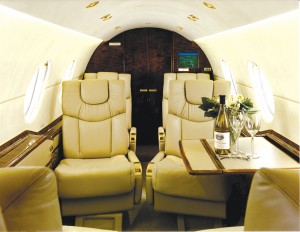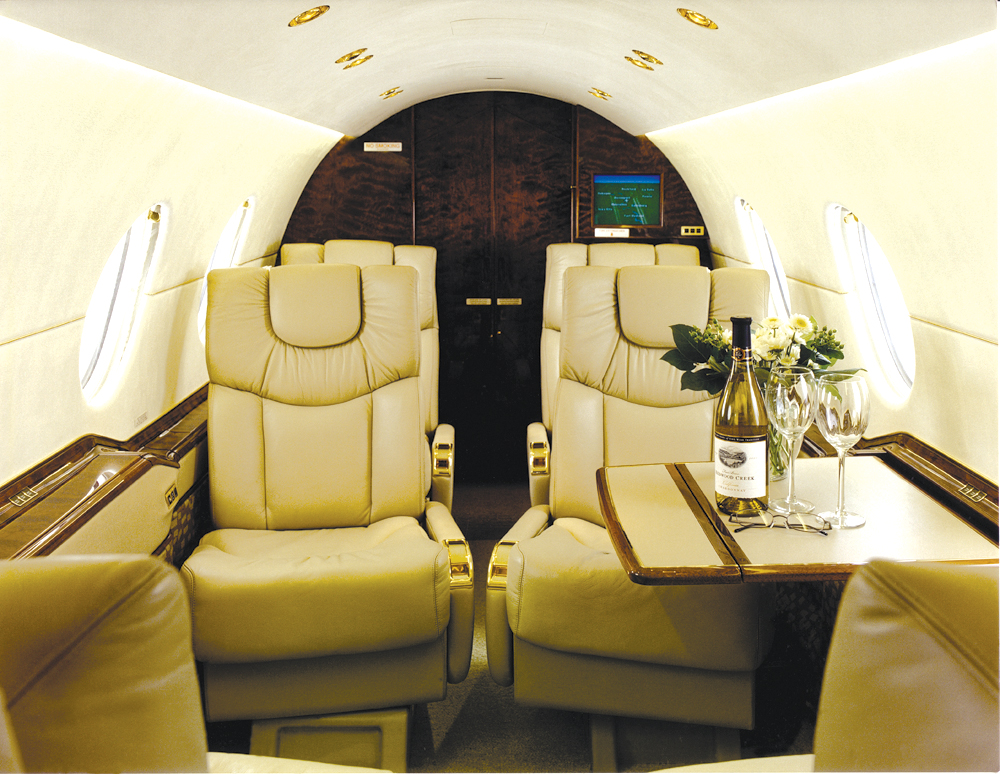
Translate the owner’s needs and preferences (abstract ideas) into quantifiable data (a work scope) and then transform that into the end product–an aesthetically pleasing and functional interior. This is the job of an interior professional.
Processes in aviation are generally defined in specific factual terms—and for good reason. Imagine an aircraft navigation system based upon opinion and educated assumptions instead of facts. The crowded skies would become far more challenging.
Yet, interior completion is an interpretation or opinion of factors that can’t be quantified. For this reason, aircraft operators often view the refurbishment of their cabin with a degree of unease.
The effects of an aircraft modification or avionics installation can be easily quantified. There are manuals and publications to teach the specifics of an aircraft system, yet no resources are available for learning how to quantify a “warm, yet professional atmosphere.”
Enter the interior refurbishment professional. This specialist is essentially an interpreter who can turn abstract ideas, such as the owner’s needs and preferences, into quantifiable data in a work scope, and then manage the transformation of that data into a beautiful, versatile and functional interior.
The selection process
You can judge an interior completion center in three ways:
1. A list of references: the best confidence builder is praise from satisfied customers.
2. A rendering of the proposed interior with material samples provided for customer review. Elliott Aviation’s design staff utilizes the latest technology, including computer software that can even show virtual 3D images.
3. The proposal content. Perhaps the most important measurement, this is what provides a bridge from concept to reality. An interior proposal should be easy to understand and define the work scope in great detail while using as few words as possible.
Finally, the interior completion sales representative should be available to answer any questions you may have. If work is performed correctly up front, the transition from concept to reality will be an easier process. A clearly defined work scope provides greater understanding for all involved.
Now the skill and artistry of the technician comes into play, and you’re able to watch the transformation of your cabin.
Don’t settle for ordinary
Today, many aircraft operators prefer that their interiors, like so many other things in life, do double duty with ease, and look good in the process.
Whether it’s a cell phone-camera-MP3 player or an SUV-carpooler-mountain tamer-hauling machine, convertible convenience is catching hold as our society spins into an ever faster, multi-tasking culture.
Operators have different needs for different missions, so it’s often necessary to create versatile, functional interiors.
Even aircraft manufacturers are seeing the need for flexibility. Bombardier offers an interchangeable divan and seat option on the Challenger 300. It’s very appealing to customers.
Even so, aircraft manufacturers haven’t embraced the concept wholeheartedly, which leads customers to interior modification specialists. Conversion mods offer flexibility and convenience. Plus, they make the aircraft more marketable. Elliott has recently handled a Hawker 700 executive interior to air ambulance conversion.
Multi-tasking furnishings
The latest trend in convertible convenience is a galley that can be customized from flight to flight. A modular cabinet system features a hard-mounted shell with removable and interchangeable modules, each designed for a different purpose. When the aircraft lands, you pull out the wet bar module and pop in the soda can and ice storage module or one that holds catering trays.
Customers have lots of options, including a food service and prep area, coffee service, wine service with rack, and china and flatware storage.
Like customized cabinetry, the modular shell and inserts can be wrapped with hardwood veneers to make the unit look like a piece of beautiful furniture.
Keeping costs down
Interior modifications can be costly depending on the amount of design and engineering required.
“Any change in the oxygen delivery system or the seating requires an STC from the FAA,” explained Wayne Etling, director of technical services. “Shared engineering helps keep time and costs down for customers with the same type of aircraft.
At Elliott Aviation, we work with customers to see if we can accomplish what they want in the simplest, most cost-efficient manner possible,” said Etling.











